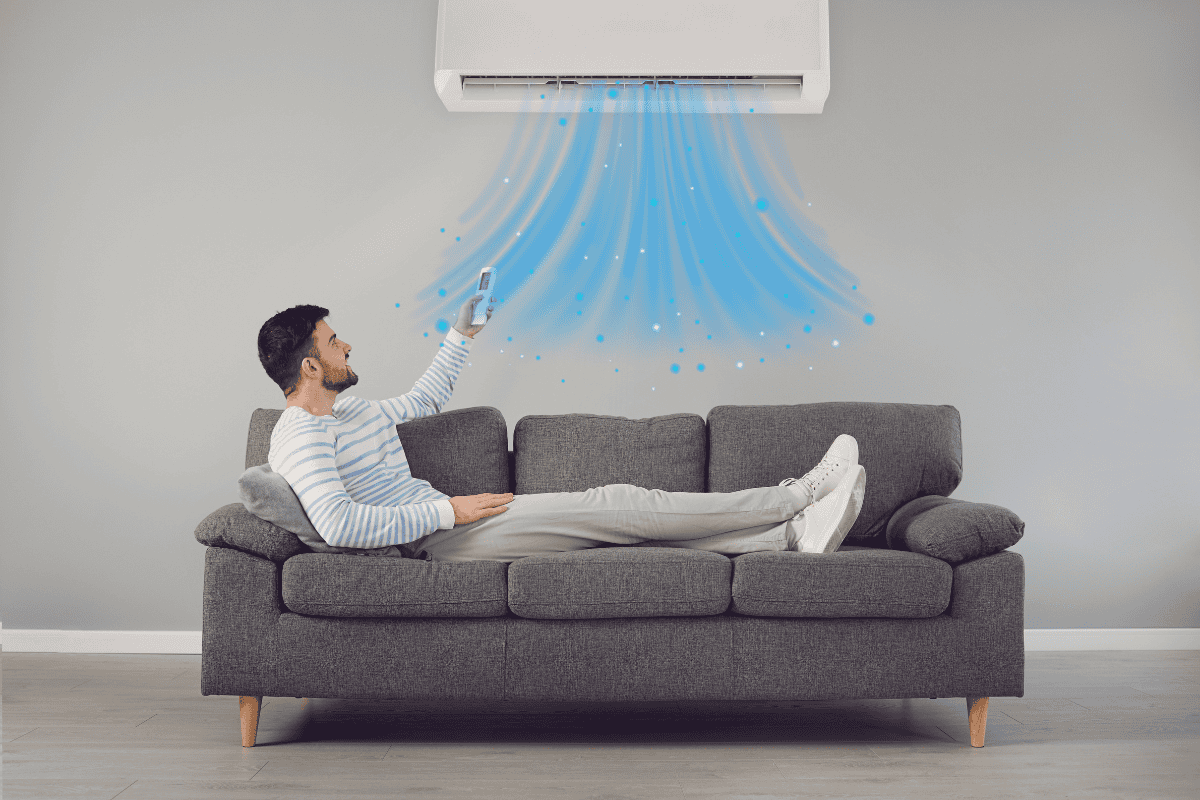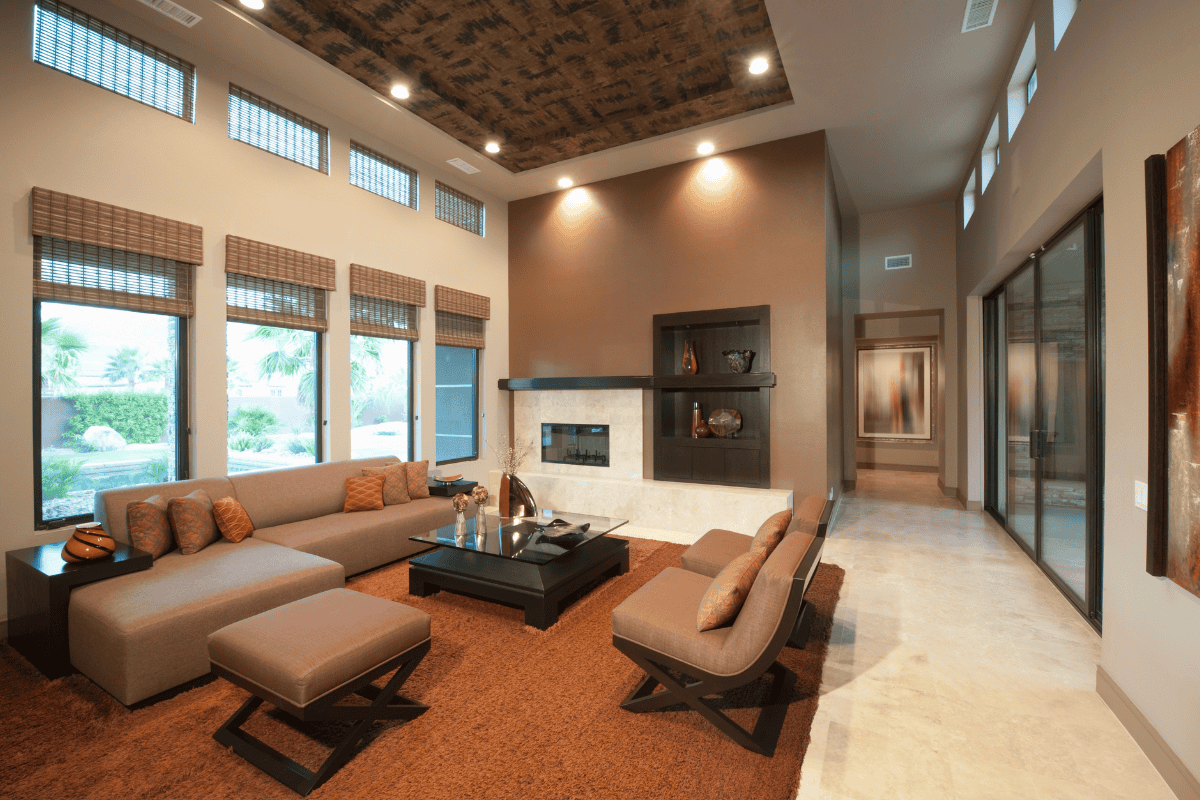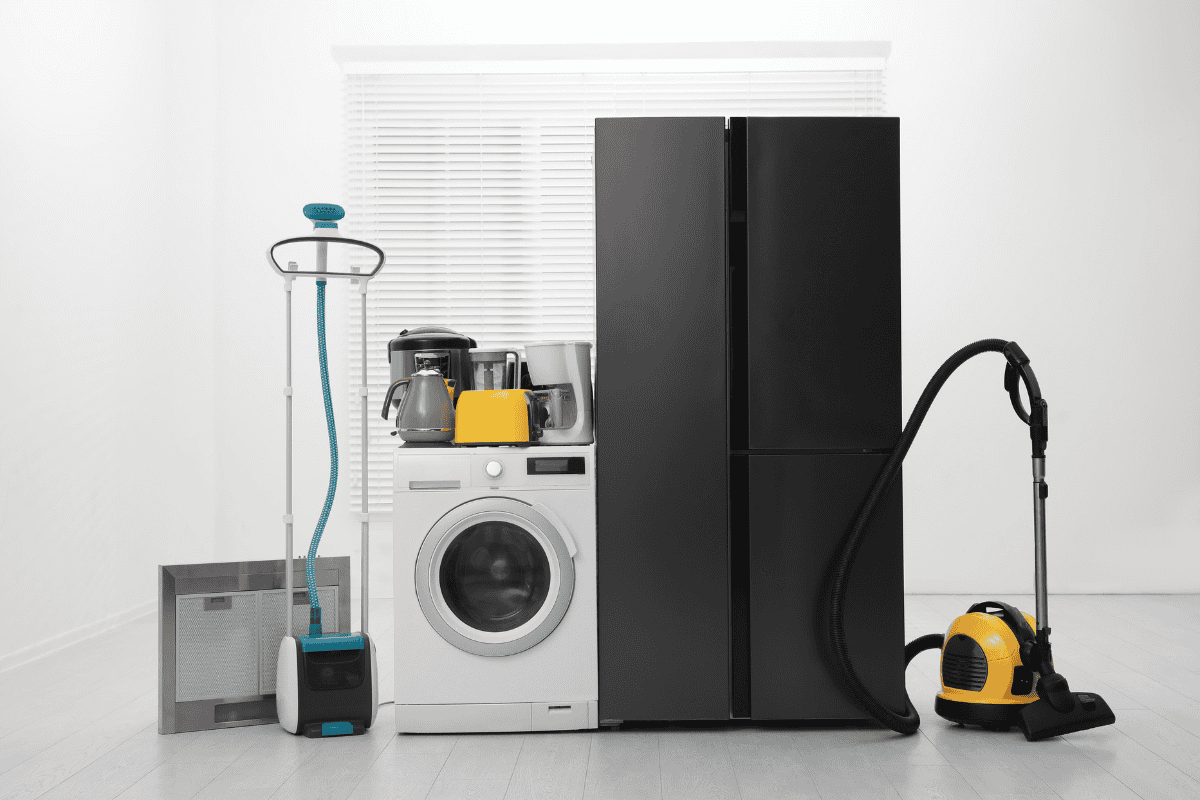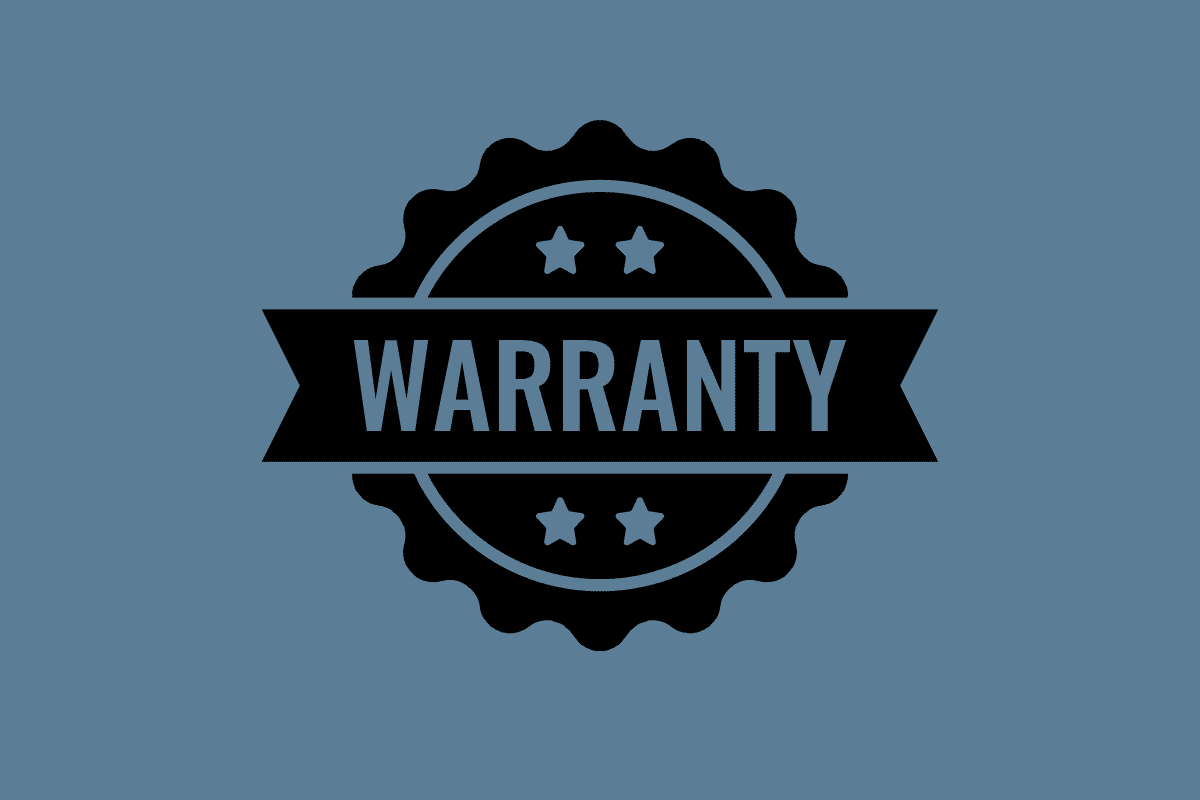How Many Square Feet Does a 3 Ton AC Cool? Let’s Find Out!

When it comes to cooling your home, understanding the right air conditioning unit for your space is crucial. A 3 ton AC unit is a common choice for many homeowners, but how much square footage can it effectively cool?
The general rule of thumb is that a 3 ton air conditioner can cool between 1,200 to 1,500 square feet of living space. However, it’s essential to consider various factors that can impact the unit’s cooling capacity and performance.
The term “ton” in air conditioning refers to the unit’s cooling capacity, not its weight. Specifically, one ton is equal to the amount of heat required to melt one ton of ice in 24 hours or 12,000 BTUs (British Thermal Units) per hour.
While a 3 ton AC unit is a common choice, the actual square footage it can cool may vary based on factors such as insulation levels, window exposure, climate conditions, and the home’s layout.
Selecting the correct tonnage is vital for energy efficiency and optimal cooling. An undersized unit will struggle to keep your home comfortable, while an oversized one will cycle on and off frequently, leading to uneven cooling and higher energy costs.
Contents
- 1 What is AC Tonnage?
- 2 Determining Cooling Capacity for a 3 Ton AC
- 3 Factors Affecting Square Footage Coverage
- 3.1 1. Climate Considerations
- 3.2 2. Insulation and Building Materials
- 3.3 3. Ceiling Height and Room Layout
- 3.4 4. Sunlight Exposure
- 3.5 5. Windows and Doors
- 3.6 6. Occupancy and Usage Patterns
- 3.7 7. Ventilation
- 3.8 8. Local Building Codes
- 3.9 9. Heat-Producing Appliances
- 3.10 10. Air Leaks
- 3.11 11. Shade and Landscaping
- 3.12 12. Altitude
- 4 Factors Affecting the Cost of A 3 Ton AC Unit
- 5 Contact HVAC Angel for Air Conditioner Installation
- 6 Frequently Asked Questions
What is AC Tonnage?
AC tonnage refers to the cooling capacity of an air conditioning unit. One ton of cooling capacity is equivalent to the amount of heat required to melt one ton (2,000 pounds) of ice in a 24-hour period. The tonnage of an AC unit directly correlates with its ability to remove heat from a space. Higher tonnage indicates a greater cooling capacity.
It was historically determined that it takes 286,000 British Thermal Units (BTU) to melt one ton of ice in 24 hours. This is how the 12,000 BTUs per 1 ton of AC capacity was established. This calculation is how tonnage is determined for all AC units.
Conversions:
- 12,000 BTUs -> 1 Ton
- 18,000 BTUs -> 1.5 Tons
- 24,000 BTUs -> 2 Tons
- 30,000 BTUs -> 2.5 Tons
- 36,000 BTUs -> 3 Tons
- 42,000 BTUs -> 3.5 Tons
- 48,000 BTUs -> 4 Tons
- 60,000 BTUs -> 5 Tons
The calculation involves assessing various factors such as the size of the space, the heat load (including factors like sunlight exposure and internal heat sources), and the desired temperature.
Determining Cooling Capacity for a 3 Ton AC
A 3 ton AC unit has a cooling capacity of approximately 36,000 British Thermal Units (BTU) per hour. This calculation is based on the standard conversion of 12,000 BTUs per ton.
The rule of thumb for estimating the cooling capacity required for a given space is about 20 BTUs per square foot. Using this rule, you can calculate the approximate square footage a 3 ton AC unit can cool:
36,000 BTUs / 20 BTUs per square foot = 1,800 square feet
However, the actual cooling coverage is often changed based on the insulation of the house and climate. Factors like the size of the home, the number of windows, the level of insulation, and the climate in your area can all impact the size of the air conditioning unit needed to effectively cool your space.
It’s essential to choose the right size AC unit for your home for optimal cooling, energy efficiency, and comfort. An undersized unit will struggle to keep your home cool, while an oversized unit will cycle on and off frequently, leading to uneven cooling and higher energy costs.
Working with an HVAC professional who have appropriate calculator, can perform a Manual J load calculation is the best way to determine the right size air conditioner for your home’s specific cooling needs.
Factors Affecting Square Footage Coverage
1. Climate Considerations
The climate of the region, including temperatures and humidity levels, plays a crucial role in determining the required cooling capacity. Hotter or more humid climates may necessitate a larger AC unit to effectively cool the same square footage compared to milder climates.
2. Insulation and Building Materials
Well-insulated homes with energy-efficient building materials can retain cool air better, reducing the cooling load. Such homes may require smaller AC units to achieve the desired temperature. Conversely, poorly insulated homes or those with less efficient materials may need larger units to compensate for heat gain.
3. Ceiling Height and Room Layout
Rooms with high ceilings or open layouts tend to have a larger volume of air that needs to be cooled. These spaces may require more powerful AC units to distribute cool air evenly throughout the area.
4. Sunlight Exposure
Rooms that receive direct sunlight, especially during peak hours, absorb more heat, increasing the cooling load. This heat gain can raise the temperature within the space, necessitating a higher cooling capacity from the AC unit to maintain comfortable conditions.
5. Windows and Doors
The number, size, and quality of windows and doors in a room affect heat transfer. Spaces with more or larger windows and doors may require additional cooling to compensate for heat gain or loss through these openings.
6. Occupancy and Usage Patterns
Rooms that are frequently occupied or used for activities that generate heat, such as cooking in kitchens or operating electronic equipment in home offices, can experience higher internal heat loads, requiring a larger AC unit to offset the additional heat.
7. Ventilation
Proper ventilation is crucial for distributing cool air evenly throughout a space. Inadequate ventilation can result in stagnant pockets of warm air, necessitating a larger AC unit to maintain consistent cooling throughout the area.
8. Local Building Codes
Building codes often specify requirements for HVAC system efficiency and sizing. Compliance with these regulations may influence the selection of an AC unit, making sure that it meets the prescribed standards for energy efficiency and cooling capacity.
9. Heat-Producing Appliances
Appliances such as ovens, dryers, and computers generate heat during operation. The presence of these appliances can contribute to the overall heat load in a room, requiring a larger AC unit to offset the additional heat and maintain comfortable temperatures.
10. Air Leaks
Air leaks in ductwork, windows, doors, and walls can compromise the efficiency of an AC system by allowing cool air to escape and hot air to enter. This can increase the cooling load, potentially requiring a larger unit to compensate for the lost efficiency.
11. Shade and Landscaping
Natural shade from trees, awnings, or other landscaping features can reduce solar heat gain in a property. By providing shade, these elements help lower the cooling load, potentially allowing for a smaller AC unit to adequately cool the space.
12. Altitude
At higher altitudes, the air density is lower, which can affect heat transfer and the efficiency of an AC unit. Units may need to work harder to achieve the same cooling effect at higher altitudes, requiring a larger unit to compensate for reduced efficiency.
Factors Affecting the Cost of A 3 Ton AC Unit
1. Brand
Different brands offer air conditioning units at varying price points. Premium brands with established reputations for quality and performance tend to command higher prices compared to lesser-known or budget brands.
2. Model
Within each brand, there are typically multiple models available, ranging from basic entry-level units to high-end models with advanced features and technologies. The specific model chosen can have a significant impact on the overall cost, with more feature-rich and technologically advanced models generally being more expensive.
3. Efficiency Rating
AC units are rated for energy efficiency using metrics such as the Seasonal Energy Efficiency Ratio (SEER). Units with higher SEER ratings are more energy-efficient, which can lead to lower operating costs over time. However, these more efficient units often have a higher upfront cost compared to less efficient models.
4. Cooling Capacity
The cooling capacity of an AC unit, measured in tons, directly impacts its size and cost. A 3 ton AC unit, with its higher cooling capacity, will typically cost more than a smaller unit with a lower tonnage rating.
5. Installation Requirements
The complexity of the installation process can affect the overall cost. Factors such as the need for ductwork modifications, the type of system being installed (e.g., central air vs. ductless mini-split), and any necessary structural or electrical work can increase installation costs.
6. Additional Features
Some AC units come equipped with additional features like variable-speed compressors, advanced filtration systems, or smart technology capabilities. While these features can enhance performance and convenience, they also add to the unit’s overall cost.
7. Warranty Coverage
The length and terms of the warranty included with the AC unit can vary between manufacturers and models. Units with longer or more comprehensive warranties may have higher upfront costs, but they can provide greater peace of mind and protection against future repair expenses.
8. Geographic Location
Prices for AC units can vary depending on regional factors such as demand, competition among suppliers, and local building codes or regulations. In areas with higher demand or stricter regulations, prices may be higher.
9. Installation Labor
The cost of labor for installing the AC unit, including any required permits, electrical work, or ductwork modifications, can contribute significantly to the overall expense. Labor costs can vary based on factors like the complexity of the installation and the rates charged by HVAC contractors in the area. Most people pay $500 to $2,500 for labor.
Contact HVAC Angel for Air Conditioner Installation
At HVAC Angel, we partner with several licensed HVAC companies to provide reliable and professional air conditioning installation services. Our technicians are knowledgeable and experienced in selecting the right air conditioner unit for your home, ensuring a proper installation that meets all local codes and regulations.
Call us at (206) 222-7194, enter your zip code, and you will be connected with our partnered AC technician in your town. They will assess your cooling needs, discuss the suitable options, and guide you through the process of selecting the right size air conditioner for your home.
When it comes to installing a new air conditioning system or a heat pump, it’s essential to work with a reputable company that prioritizes quality workmanship and customer satisfaction. Our partnered technicians are trained to handle installations of all complexities, making sure that your new AC unit operates efficiently and provides optimal comfort for years to come.
Frequently Asked Questions
1. Is a 3 ton AC big enough?
The suitability of a 3 ton AC unit depends on various factors like insulation levels, climate conditions, and the size of the space it needs to cool.
2. How long should a 3 ton AC unit last?
With proper maintenance and care, a 3 ton AC unit can typically last between 10 and 15 years.
3. Is a 3 ton AC too big for a 1,500 square foot home?
While a slightly oversized AC unit may incur a higher upfront cost, it’s generally better to have a unit that can handle the cooling load rather than being undersized and struggling to cool the space efficiently.






